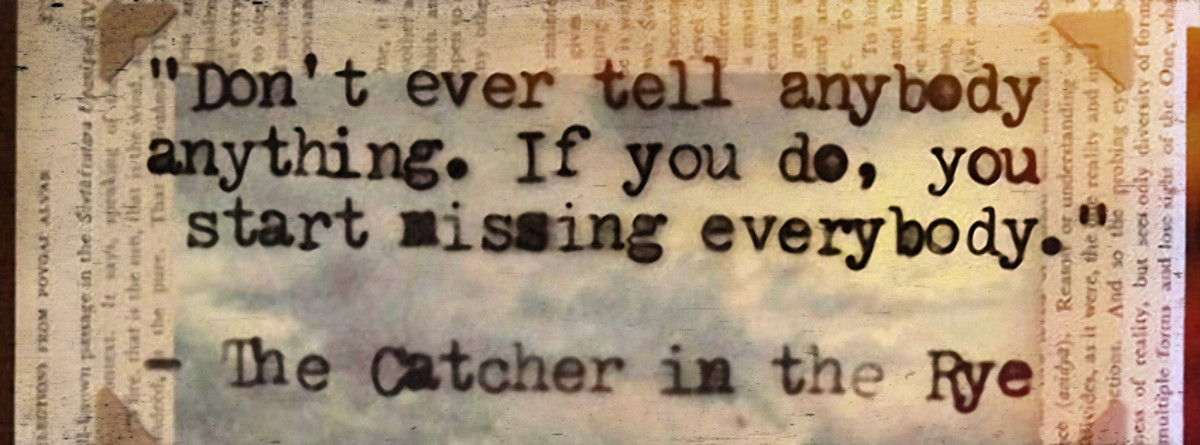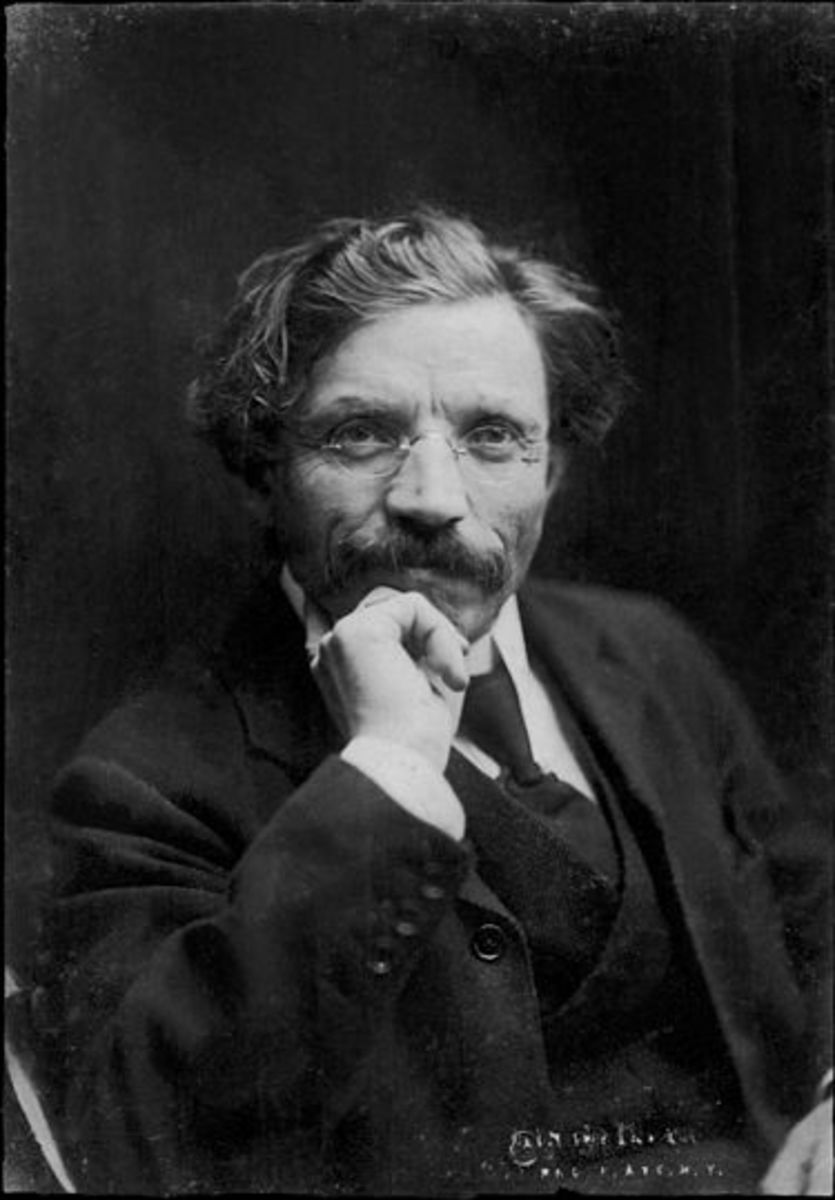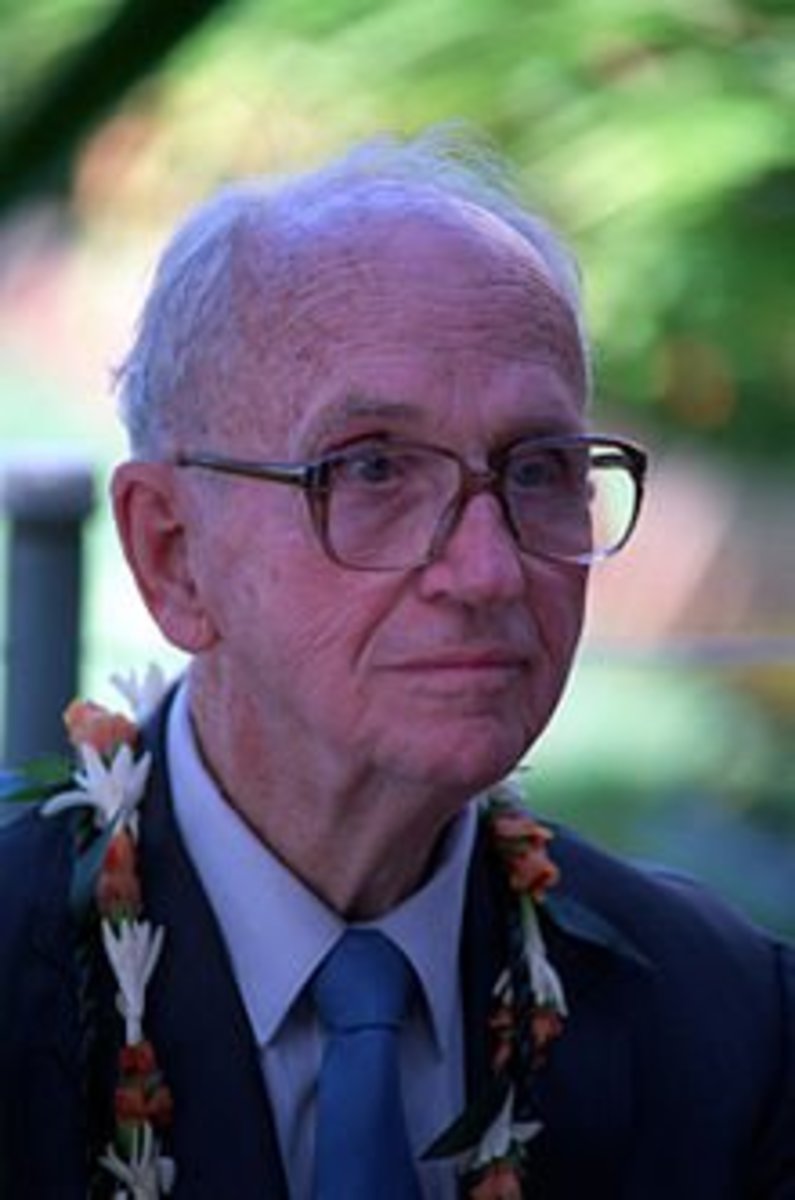Catcher in the Rye by J. D. Salinger
The Catcher in the Rye
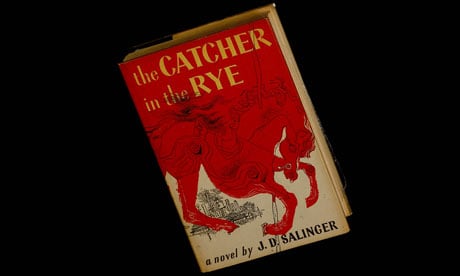
Salinger Famous For Catcher in the Rye
We lost one of the world’s most famous authors on February 2, 2010, who is best known for writing Catcher in the Rye. The Catcher in the Rye has become more famous since it has been linked to some murderers. The book is popular, yet controversial. Mark David Chapman, the murderer of John Lenin is one of the best-known examples of an individual being caught up in this novel.
J. D. Salinger as a Young Man
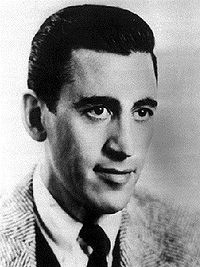
Salinger's Life
Jerome David Salinger (January 1, 1919 – January 27, 2010) was born and grew up a Park Avenue apartment in Manhattan. He was Jewish, the son of an importer of Kosher cheese and his mother was Scotch-Irish. His nick name was Sonny as a child. He attended some prep schools and attended Valley Forge Military Academy for two years. He was always known for his sarcastic wit as a youth.
He spent several months in Europe and fell in love with Oona O’Neill, writing her frequent letters but was shocked when she married Charles Chaplin. He also attended Ursinus College and New York University. Then, in 1939, Salinger took some classes on writing short stories at Columbia University.
He was drafted into the infantry in World War II and involved in the invasion of Normandy. He fought in the Hurtgenwald, one of the bloodiest of the war and was considered a hero. While in Europe he met Ernest Hemingway and managed to write some short stories. In 1945 Salinger married a French woman named Sylvia who was a doctor but they ended up in divorce.
His wonderful story of “For Esme’- With Love and Squalor” he depicted a fatigued American soldier starting a correspondence with a 13 year old English girl, which helped him get a grip on life again. A biography written by Ian Hamilton, states the Salinger was hospitalized for stress.
After the war he wrote short stories that appeared in magazines such as Story, Saturday Evening Post, Esquire, and the New Yorker. By 1948 numerous short stories appeared in a large variety of magazines and he was becoming very well known.
Catcher in the Rye
Finally, in 1951, he published "Catcher in the Rye", which became an immediate bestseller, placed on the book-of-the-month club immediately. He won numerous awards and ended up earning $65 million dollars, which was a lot of money in 1951.
He wrote the book for adults, but it hit home with the adolescents for its theme of teen rebellion. The book depicted adolescent alienation and loss of innocence which seems to be the draw. Most of us have certainly read this book in school or on our own. If you know the book well, you may want to skip this next paragraph.
The story is written in a monologue with lively slang. The main character in Salinger’s book was Holden, 16 years old, who was rebellious and he showed no growth in maturity by the end of the book. Holden thinks like an adult but acts his age. He views himself to be smarter than the average person, as mature as an adult but he’s quick to become emotional. His dream is watching over children playing in a field if rye at the edge of a cliff. When the children wander to close to the cliff, he saves them. His world view is that it is phony and Holder represents the early hero of adolescent angst, yet full of life. He alludes to getting sick and living in a mental hospital toward the end of the book. People that read this story interpret his character in many ways based probably on their own experiences as a teenager struggling to grow up. A book allows you to do that much more so than a movie.
Catcher in the Rye has had periods of time where it was censored from schools, John Hinckley Jr., the man who attempted to assassinate President Ronald Reagan. was a big fan of this book. Mark David Chapman was John Lennon’s assassin and was said to be obsessed with the book. This book has been referred to in numerous movies. I don't understand how the obsession of this book would cause someone to kill another human being, but it happened.
RIP JD Salinger
Copy of Salinger's Letter Turning Down a Movie Deal
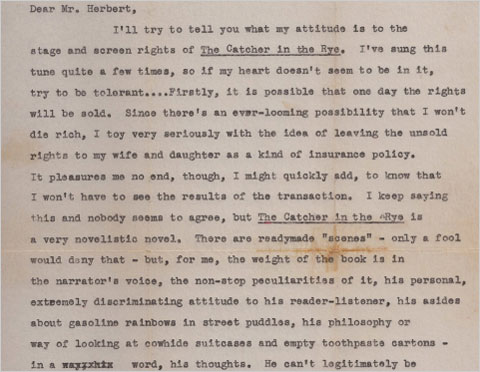
Quotes from Catcher in the Rye
Catcher in the Rye is considered a controversial book and almost every chapter has a famous quote. Examples listed on http://classiclit.about.com/od/catcherintherye/a/aa_catcherquote.htm:
"All morons hate it when you call them a moron." J.D. Salinger, The Catcher in the Rye, Ch. 6
"I'm the most terrific liar you ever saw in your life. It's awful. If I'm on my way to the store to buy a magazine, even, and somebody asks me where I'm going, I'm liable to say I'm going to the opera. It's terrible." - J.D. Salinger, The Catcher in the Rye, Ch. 3
"It's no fun to be yellow. Maybe I'm not all yellow. I don't know. I think maybe I'm just partly yellow and partly the type that doesn't give much of a damn if they lose their gloves."
- J.D. Salinger, The Catcher in the Rye, Ch. 13
"All morons hate it when you call them a moron."
- J.D. Salinger, The Catcher in the Rye, Ch. 6
The Catcher in the Rye | Summary & Analysis | J.D. Salinger
Salinger Became a Recluse
Salinger did not like the publicity at all. He gave very few interviews. He wouldn’t sell the rights for the book to be made into a movie. He stated that this was a very novelistic novel and “, the weight of the book is in the narrator’s voice, the non-stop peculiarities of it, his personal, extremely discriminating attitude to his reader-listener, his asides about gasoline rainbows in street puddles,” A bit confusing statement for me, but the answer was no.
In 1955, Salinger married Claire Douglas, the daughter of the British art critic Robert Langton Douglas. He had a daughter. This marriage also ended in divorce in 1967, then Salinger's retreated into his private world and Zen Buddhism only increased. He was adamant about no interviews. One wonders why his life turned out that way when it started out in a normal fashion. Perhaps World War II experiences haunted him, too many failed marriages or maybe he just wanted to be left alone for some other personal reason. He ultimately moved to New Hampshire and lived out his days to the ripe old age of 91. No one seems to think there are numerous manuscripts at his home just waiting to be discovered.
On page 51 of his book, he wrote, “I hope to hell when I die, somebody has sense enough to just dump me in the river or something. Anything except sticking me in a ---cemetery. People coming and putting a bunch of flowers on your stomach on Sunday, and all that crap. Who wants flowers when you’re dead? Nobody.”
I imagine that fictional line was not particularly how he felt at 91, but then who knows. There is an unauthorized biography and probably more to be written. I don’t think anyone will really ever understand this man,
This content is accurate and true to the best of the author’s knowledge and is not meant to substitute for formal and individualized advice from a qualified professional.


